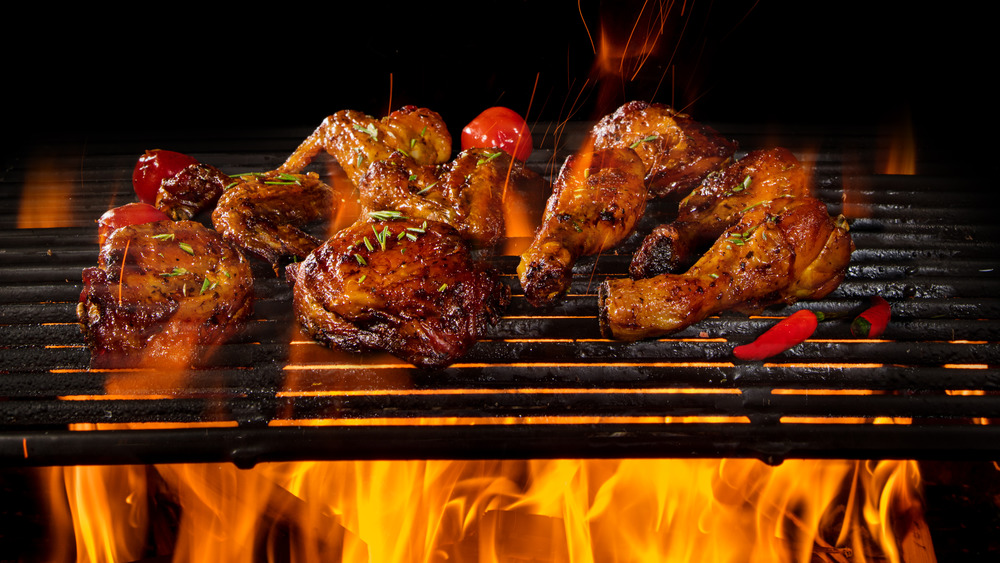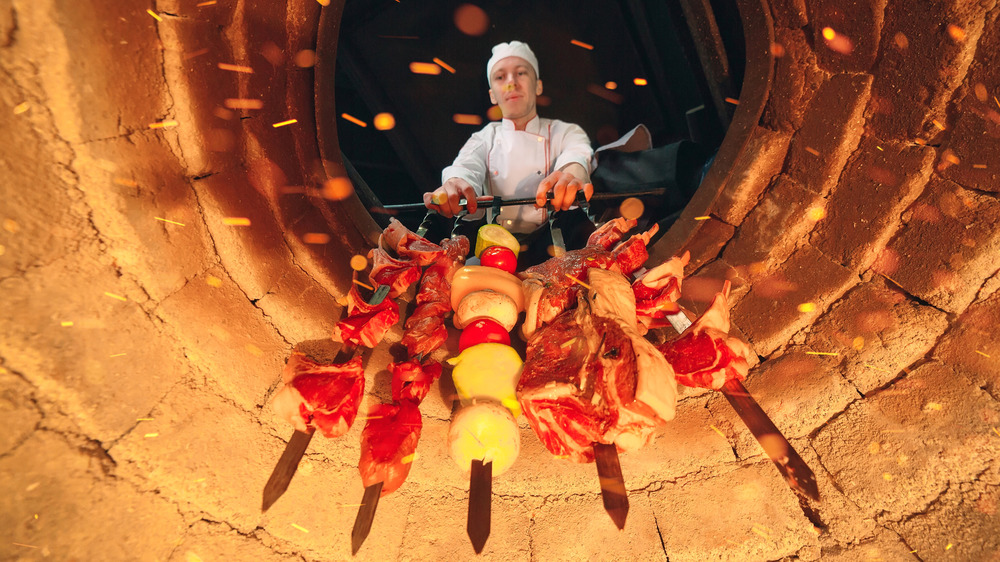Here's The Difference Between Grilled And Tandoori Chicken
Few things are better than perfectly seared chicken, blackened on the outside, deliciously moist on the inside, elevated with nuances of smoke. And there's something about cooking food somewhere other than the kitchen that implies a social affair, a time for relaxing with friends, enjoying simple yet intensely flavorful food. If you choose to char that bird on an outdoor grill, you'll find that there's a significant difference in flavor and cooking technique when compared to cooking tandoori-style.
Food Fire Friends highlights the science behind grilling and explains that it's a fast, dry heat cooking method that uses a significant amount of direct, radiant heat. Grilling cooks by thermal radiation while pan-searing on your stovetop cooks by conduction heat. The signature, beloved grilled flavor comes from the caramelization of the proteins and sugars in meat and vegetables, and this browning happens when foods reach temperatures above 310 degrees.
The Spruce Eats adds that grilling involves cooking food on an open rack or grate with a heat source underneath and, depending on the type of grill, the heat source can be an open flame (gas or charcoal) or electric. That said, standard grills typically operate in one way, cooking food on a grate over high heat.
Switch to a tandoor oven and enjoy four different cooking methods at once
A traditional tandoor is a cylindrical clay oven largely associated with South Asian cuisine. It can be a small, movable kitchen appliance or larger permanent structure (via Chennai Food Blog). Thanks to its unique belly shape, the tandoor cooks food four different ways (via Hōmdoor).
Bottom burning charcoals cook food like a standard grill, and the clay walls retain and circulate moisture like a convection oven. Then, as food cooks and juices drip onto the coals, smoke fills the oven and cooks the food like a smoker. Want to griddle too? No problem, the clay walls of the tandoor can be used to cook breads like naan, lavaash, tonis, and Afghan flatbread (via Love Laugh Mirch). Clearly, unlike grilling, which is typically used to cook meat and vegetables, tandoor ovens are used to cook a variety of foods (via Difference Between).
Another important difference? Grilled foods are cooked horizontally and require regular flipping to cook evenly. Since tandoors are cylindrical, food is cooked vertically on skewers, which allows heat to circulate around the food and eliminates the need for flipping. While this may put the pit master out of work, it ensures even cooking every time. Temperatures inside a tandoor can reach up to 900 degrees, so food cooks quickly and evenly with little chance of drying out (via Hōmdoor).

